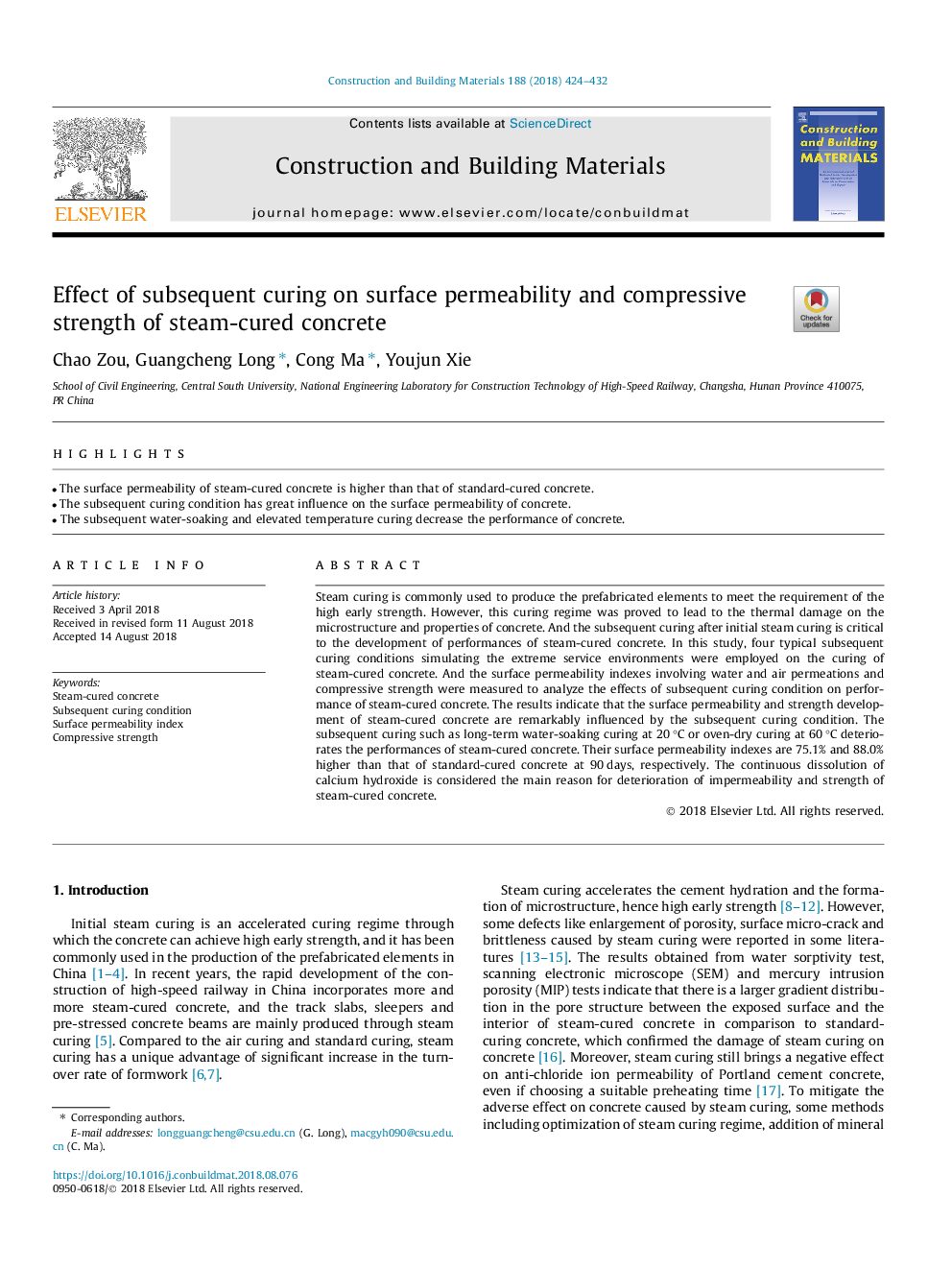| Article ID | Journal | Published Year | Pages | File Type |
|---|---|---|---|---|
| 8947085 | Construction and Building Materials | 2018 | 9 Pages |
Abstract
Steam curing is commonly used to produce the prefabricated elements to meet the requirement of the high early strength. However, this curing regime was proved to lead to the thermal damage on the microstructure and properties of concrete. And the subsequent curing after initial steam curing is critical to the development of performances of steam-cured concrete. In this study, four typical subsequent curing conditions simulating the extreme service environments were employed on the curing of steam-cured concrete. And the surface permeability indexes involving water and air permeations and compressive strength were measured to analyze the effects of subsequent curing condition on performance of steam-cured concrete. The results indicate that the surface permeability and strength development of steam-cured concrete are remarkably influenced by the subsequent curing condition. The subsequent curing such as long-term water-soaking curing at 20â¯Â°C or oven-dry curing at 60â¯Â°C deteriorates the performances of steam-cured concrete. Their surface permeability indexes are 75.1% and 88.0% higher than that of standard-cured concrete at 90â¯days, respectively. The continuous dissolution of calcium hydroxide is considered the main reason for deterioration of impermeability and strength of steam-cured concrete.
Keywords
Related Topics
Physical Sciences and Engineering
Engineering
Civil and Structural Engineering
Authors
Chao Zou, Guangcheng Long, Cong Ma, Youjun Xie,
